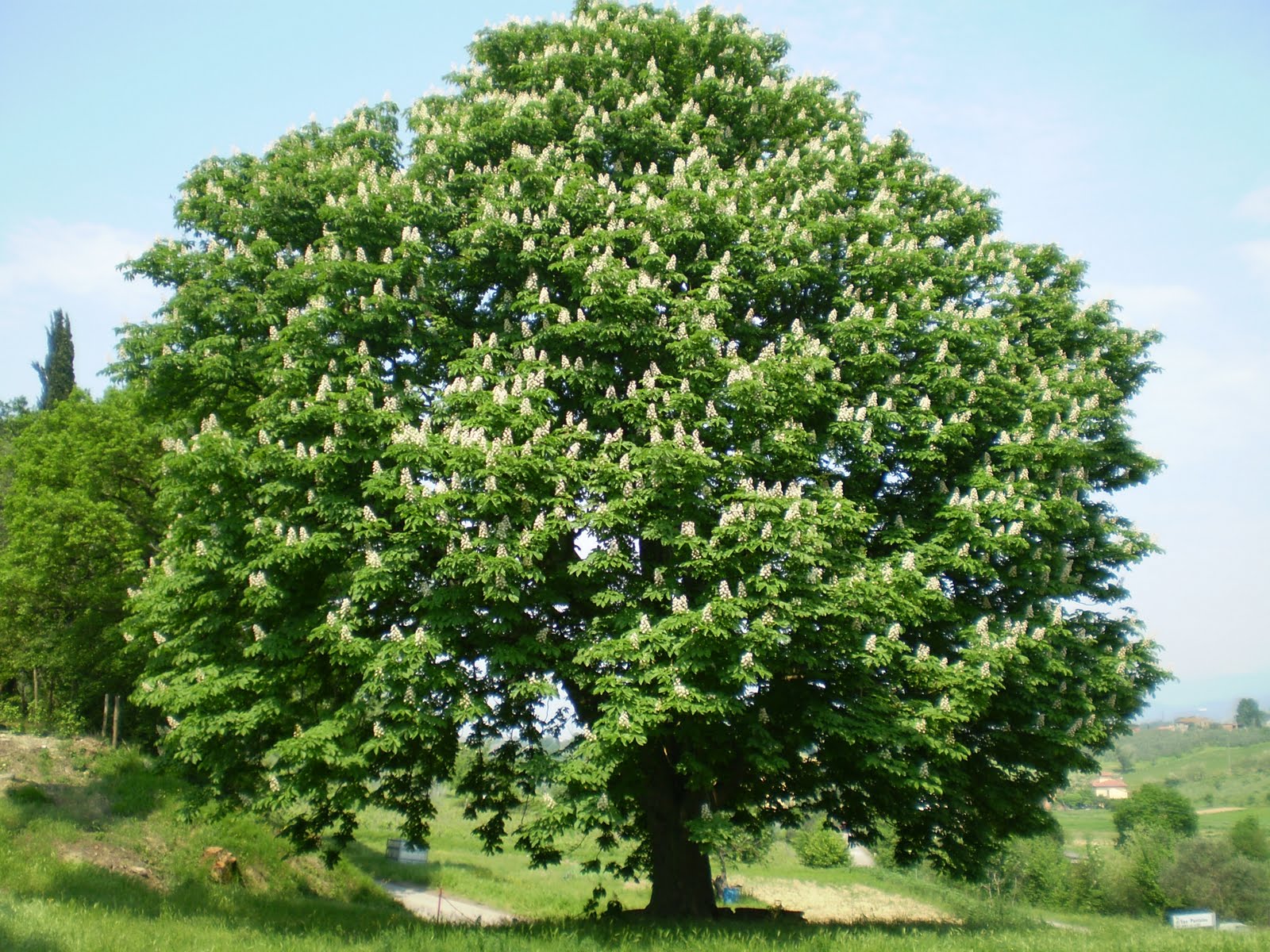
THE CHESTNUT
Bark and branches - The bark is smooth in young trees with lenticels evident, but over time you crack developing long longitudinal beads often spiraling. The chestnut show branching Sympodial for abscission of the terminal bud and this leads to a coma globular in shape. Young branches can be bare or tomentose, usually brown. The lateral buds are small, covered with 2-3 perule. The leaf scars are semicircular. -The Leaves - are simple leaves, deciduous, large, elongated, with toothed margins, stipolate and briefly stalked. The Result - The result is individual in Castanea pumila, Castanea alnifolia, Castanea ozarkensis and Castanea henryi, in groups of 2-3 in the other species, is an achene, edible, completely enclosed in a dome 2-4 Valvata, thorny commonly called "hedgehog".
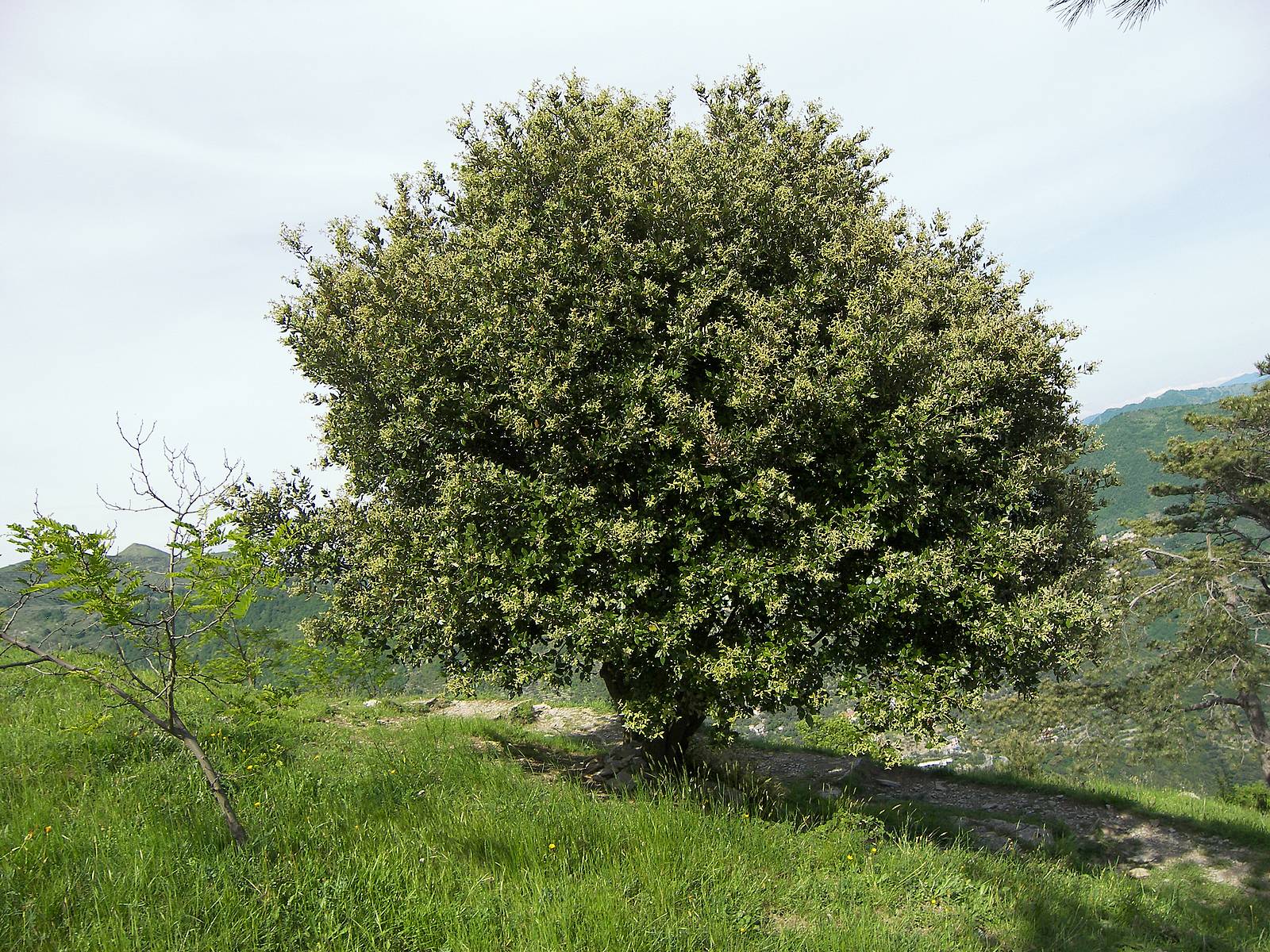
THE HOLM OAK
The holm oak is generally an evergreen tree with trunk rarely straight, single or divided at the base, height up to 20-25 meters. It can take bushy appearance if grow in rocky areas. The bark is smooth and gray when young, eventually become hard and dark almost blackish, finely cracked in chips persistent almost square. Young branches are pubescent year and gray, but after a short time become hairless and gray-greenish. The buds are small, hairy, rounded with few perule. The leaves are simple, leathery leaf margin entire or toothed, very variable in shape ranging from lanceolate to elliptical (round the subspecies rotundifolia), the base is cuneate or rounded. The upper surface is dark green and glossy, the lower gray and markedly tomentosa. They are 3-8 cm long and 1-3.5 cm wide. The center rib is straight and are 7- 11 pairs of lateral veins.
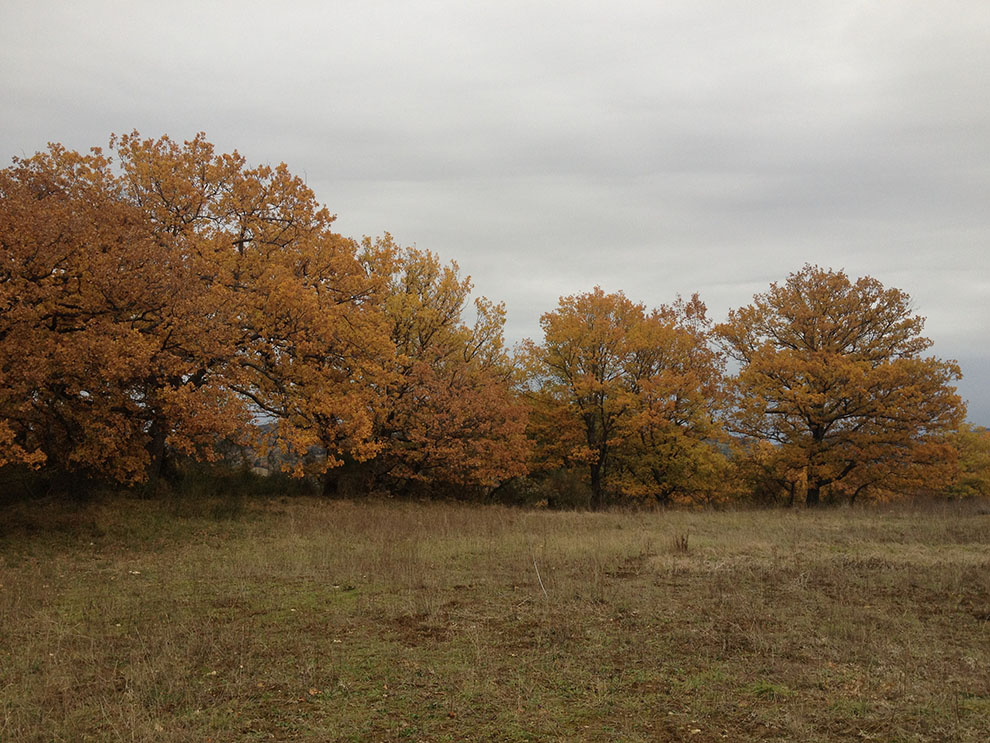
THE OAK
The genus Quercus comprises many species of trees spontaneous in Italy. In many cases the behavior is impressive even if there are shrubs. The leaves are alternate, sometimes are lobed, toothed and sometimes on the same plant can have different forms, for the difference of the foliage juvenile than adult. The oaks are monoecious plants, or the same plant bears both male flowers than female ones. The male flowers are grouped in catkins yellow, female ones are green. The fruit is the acorn, formed by a dome of scales surrounding the base of the nut. They belong to the genus approximately 450 species of hardy plants, deciduous or evergreen. The first species of oak trees appeared on Earth in the Cenozoic period.
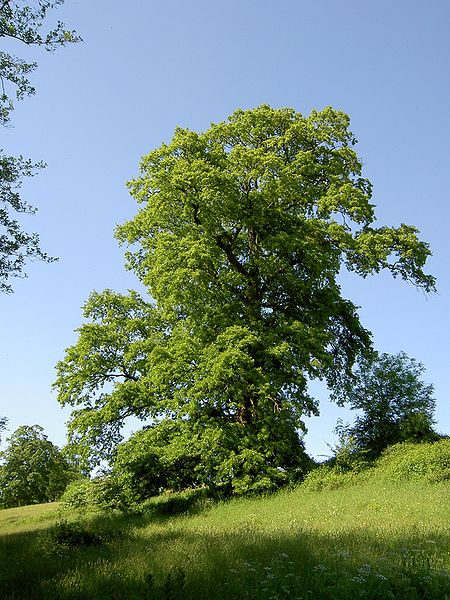
THE CERRO
The Cerro has a trunk with gray-brown bark with deep furrows reddish (the felloderma it makes it visible). It tends to develop a hair up to a height of 30-35 m. The leaves are alternate, morphologically heterogeneous, but generally they form obovate-oblong, 7-9 pairs of lobes unequal, long petiole up to 2.5 cm, belatedly deciduous. The fruits are acorns of about 2.5 cm in length, characteristic for the "cap" that covers partially covered with a kind of coarse curly hair, the color of yellowish light which are also coated gems, what allows recognition in every season. Propagation is by acorns whose physiological maturity is completed in two yearsi.
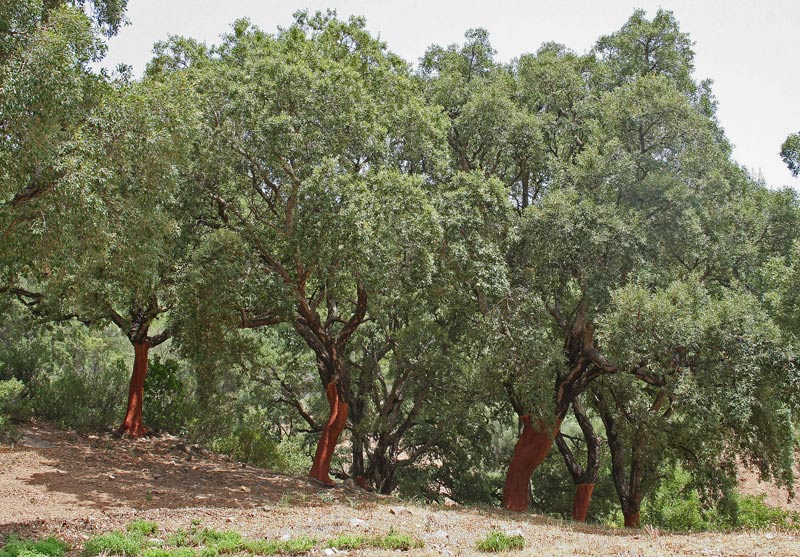
THE CORK
The cork has an arboreal, with a height that can reach 20 meters and hair loose and expanded. The average lifespan is 250-300 years, decreases in the specimens exploited for cork. The most striking feature of this species is the remarkable development in thickness of ritidoma, who never moved away from the cortex, forming a coating suberoso said in term commercial cork. The cork looks gray-reddish in the branches of a few years of age, first with cracks gray-clear, then increasingly large and irregular because of the tangential traction caused by the growth in stem diameter. Several years cork form a cover uneven and spongy gray, commonly called sugherone or male cork. After removal of the male cork, the fellogeno produces every year new layers of fabric suberoso forming a coating more compact and more regular, said cork or female kind, with a dense mainly longitudinal cracking and shallower. The year in which the cork is removed, the stem has a pronounced red-brick that over time turns red-brown to dark brown cork when the female has already reached a significant thickness. The leaves are green, leathery, hairy on the underside, generally small in dry environments, the largest ones in the cooler. They are briefly petiolate and have a lamina of variable shape from ovate to oblong. The margin is usually toothed and prickly, but can also occur in whole adult plant, more or less revolute. They can easily be confused with the leaves of the oak, from which they differ mostly for the lesser number of ribs. The advertisement on the branches is alternates. The Flowers are unisexual carried separately on the plant. Male flowers are gathered in inflorescences catkin lassi, yellow-greenish, brought the end of the branches of the previous year. The female flowers are usually gathered in small groups (2-5 flowers), erect, greenish on the branches of the year. Flowering in May-June. The fruit is an acorn oval green when immature, brown at maturity, up to 3 cm long with apex very short. The dome is more conical than that of oak, covering the acorn for a variable length from one-third to half, with greenish-gray scales, licenses, sometimes retroflex. There are two subspecies (subspecies type and subspecies occidentalis) morphologically very similar to each other except for the scales of the dome of the acorn: free and divergent in typical, crushed in occidentalis. Between the two subspecies exists a substantial physiological difference: the subspecies occidentalis has maturation of acorns every two years and not annually. In the botanical variety serotina, this along with the typical subspecies in Tuscany, Sardinia and Sicily, acorns mature in two years. The production of fruits occurs on average after 15-20 years of implantation.
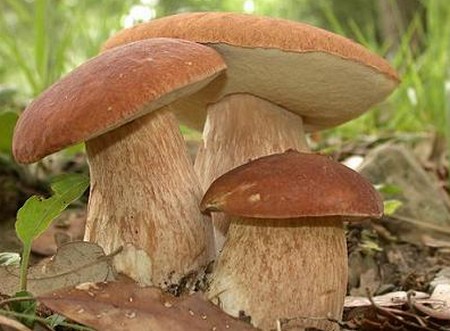
THE MUSHROOMS
The mushrooms of Amiata is a natural product of the forest. His research is a secular activity of the inhabitants of Mount Amiata: in the seventeenth century, as he tells us Gherardini, in Castel del Piano gathered mushrooms to take them on a donkey to the city of Siena. More recently, several companies have specialized in manufacturing and processing of this fragrant fruit of undergrowth which forms the basis of some delicious local dishes. With the intent to certify and promote the quality of this product has obtained the Protected Geographical Indication for fungus Monte Amiata which includes several varieties of Boletus. There are four types of mushrooms found in the area: the Boletus reticulatus, characterized by fresh and located under the oak or chestnut; Boletus aereus, the hat velvety, well located under the oak or chestnut; Boletus pinicola, the hat very dark and the explosive growth that may exceed half a pound of weight: he is the most sought after on the Amiata and can be found under the beech or chestnut, but mainly under the chestnut tree; and finally the classic Boletus edulis, which is located at the foot of beech and is the last to close the mushroom season: dried, it keeps a perfume exceptional even for more than a year. In addition to mushrooms, gather the giallarello, the greenfinch, the chumps, the pinaroli, small families, the paiciole and dozens of small, tasty mushrooms whose use characterizes the delicious mushroom amiatina soup.
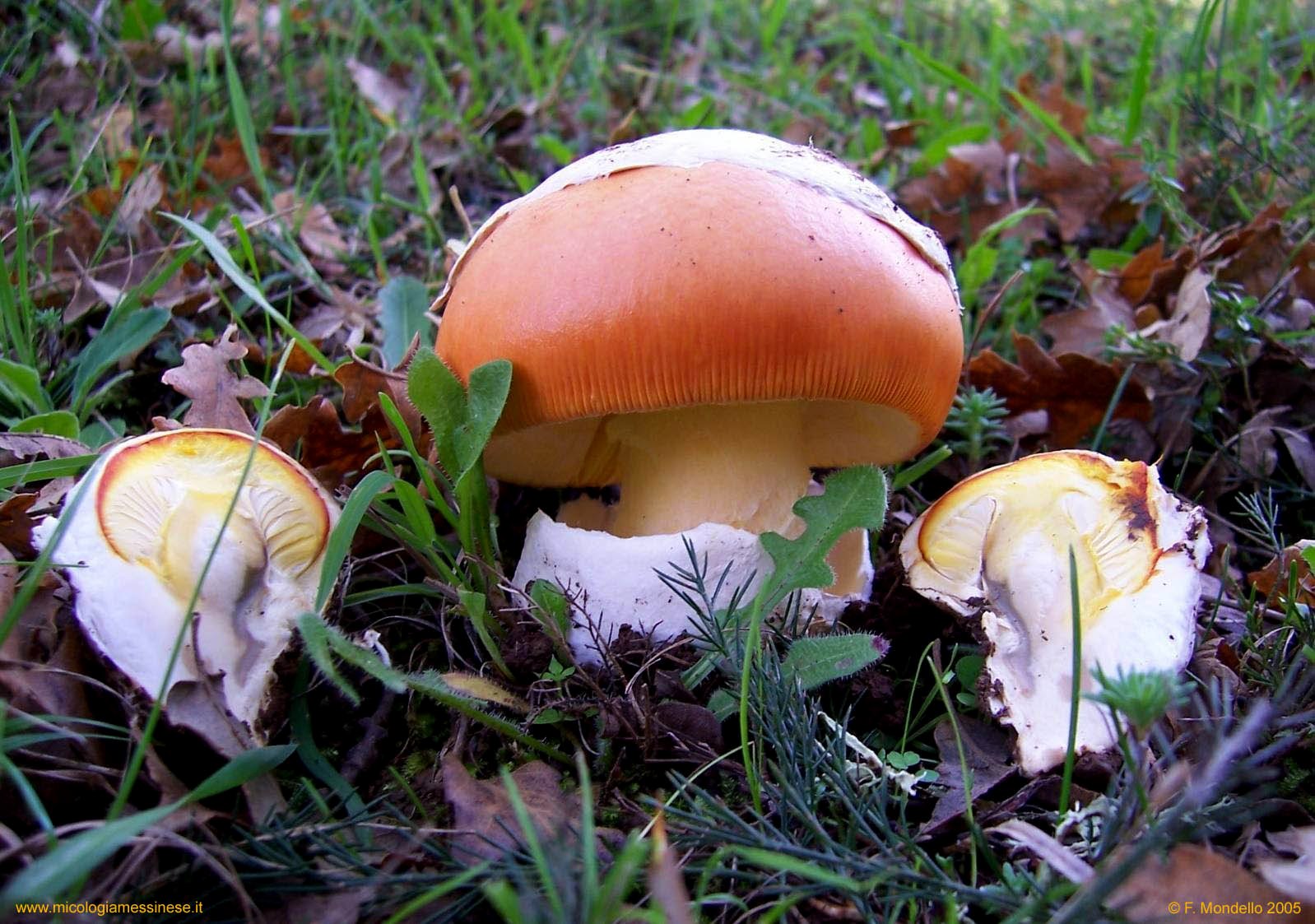
THE CUCCO
It presents a rather massive bearing with hat hemispherical, convex in the adult. The cap surface is smooth, orange-red color, brilliant. Sometimes applied with flaps white veil, volva residues. The slats are yellow egg yolk, very broad, dense, rounded to the stem. The yellow stem including the ring, while the volva at the foot of the stem continues and thick, is white in color. The mushrooms was young it is closed by the veil main looks like an egg white. Sectioned always has the orange color under the cap cuticle. Does not give off odor is present, if barely perceptible. From altered smell repellent. It grows in deciduous and also in mixed forest of deciduous and pine. Its preferred habitat are chestnut and oak. It is perhaps the best of all edible fungi, known from an ancient age. It can be eaten raw or used in several ways.
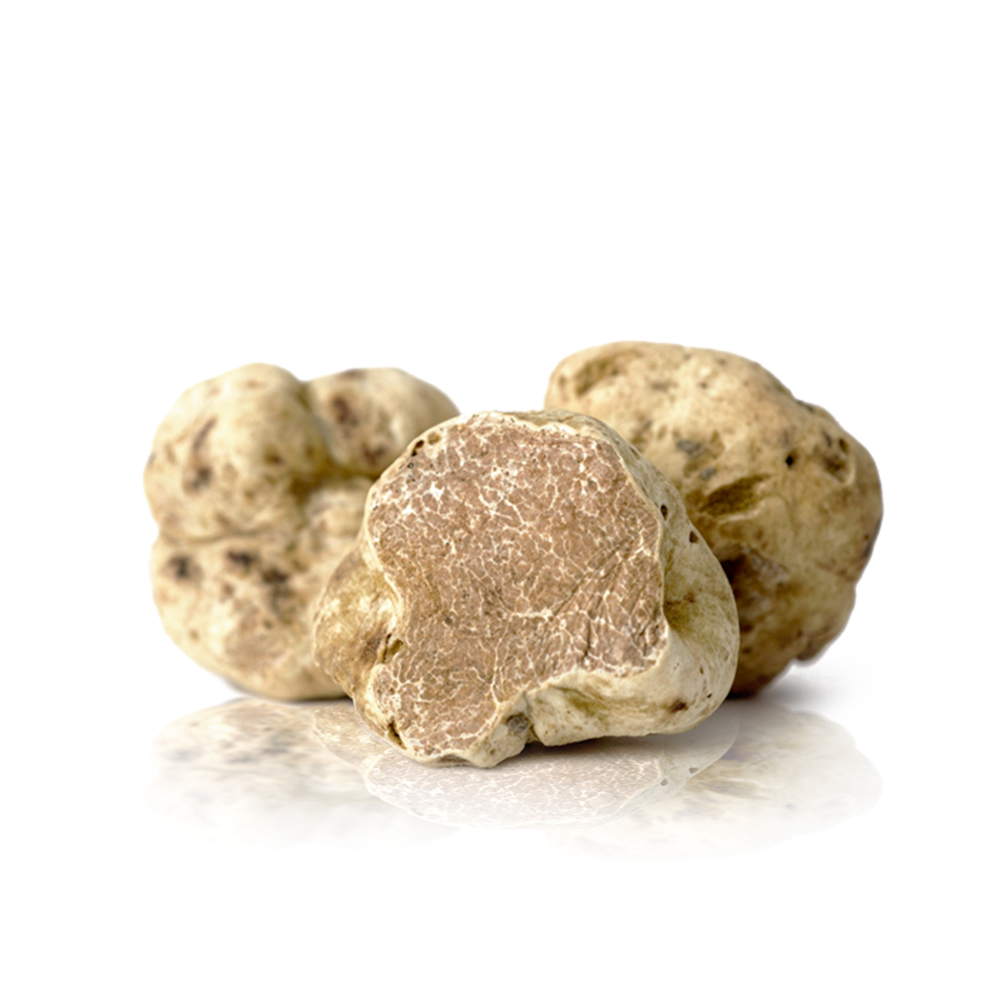
WHITE TRUFFLE
The king of truffles that grows very well in Tuscany is the prized white truffle, whose collection runs from 10 September to 31 December, mainly in the areas of the Crete Senesi and Montagnola. This highly prized truffle can cost up to 3000 euros per kilo!! The intense and fragrant flavor and its perfume make it a true excellence of the territory! It is mainly used grated on a hot plate.
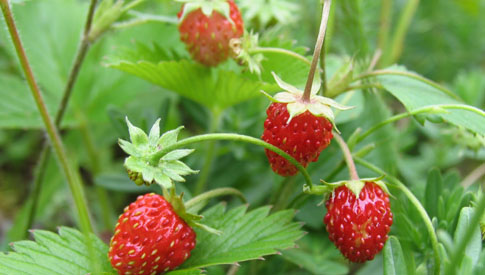
THE WILD STRAWBERRY
The Fragaria vesca (wild strawberry) is a herbaceous plant of the rose family. Spontaneous undergrowth in Italian, is grown for its fruit: strawberries small very intense aroma. It differs from hybrid varieties cultivated Fragaria to the fact that the fruit is small and soft (hence the name vesca which is Latin for spring). According to some sources, the name Fragaria is indoors and is connected to the Sanskrit GHRA, whose meaning is "fragrance". The leaves gathered at the base in small clumps, are trifoliate and serrated. The small white flowers from 4 to 6 petals bloom in the period from April to July, sometimes plants flourish again in the fall. The fruit is actually a false-fruit, which holds the fruits properly said that are the seeds of which is sprinkled with the surface.
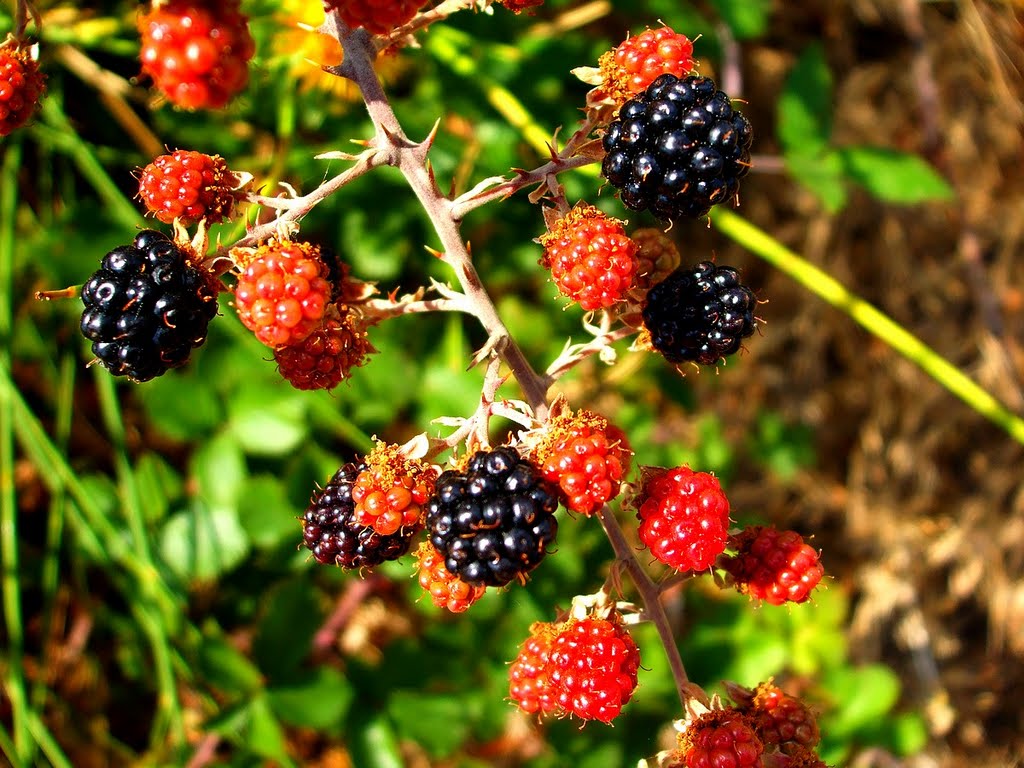
THE WILD BLACKBERRY
It looks like perennial shrub, with stems sarmentosa aircraft pentagonal section lengths up to 6 meters and even more, spiny arched. It is a semi deciduous, as many leaves remain during the winter. The leaves are imparipinnate, variably consist of 3-5 leaves with serrated margin, dark green, elliptical or oval and sharply sharp, smooth upper surface and underside tomentosa with white hairs. The white or pink flowers, are composed of five petals and five sepals. They are grouped in clusters to form inflorescences oblong or pyramidal. The color of the petals varies from specimen to specimen with dimensions comprised between 10 and 15 mm. The bloom appears in the early summer. The edible fruit is composed of many small drupes, green at first, then red and finally blackish at maturity (blackberry), each arising from carpels separate but part of the same harem. In Italy the fruit is ripe in August and September; the flavor varies from sweet to sour. The multiplication of the plant is by cuttings or offshoots apical.
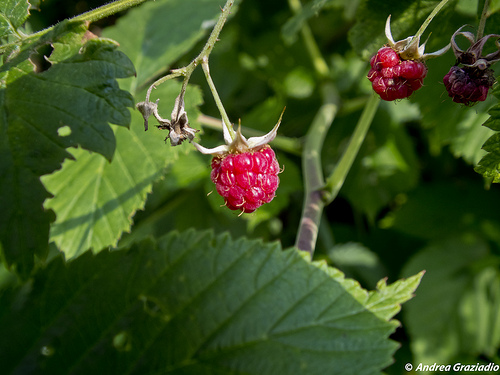
THE WILD RASPBERRY
The raspberry is a shrub in the family Rosaceae, whose namesake fruit, red and sweet and sour taste is very appreciated in food preparation. Flowering occurs usually between May and June while the fruit, composite, mature in late summer or early fall. It typically grows in open areas within a forest or opportunistically colonizes parts of the forest that have been subject to fire or cutting wood. It is easy to grow in temperate regions and has a tendency to spread quickly. The raspberry is an aggregate of drupes.
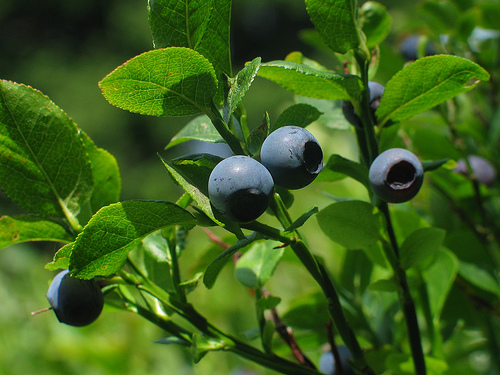
THE WILD BLUEBERRY
It is a shrubby plant, a spreading habit, height between 20 and 60 cm, with oval leaves. The flowers have a shape typical jar upside down, with petals welded together. This form is common to all Ericacee. The ovary is inferior. The fruits, bluish, have the appearance of berries, but they are false berries, because they originate from sepals, petals and stamens, as well as from the ovary. They are consumed fresh or made into jam. It flowers in May and bears fruit in July-August.
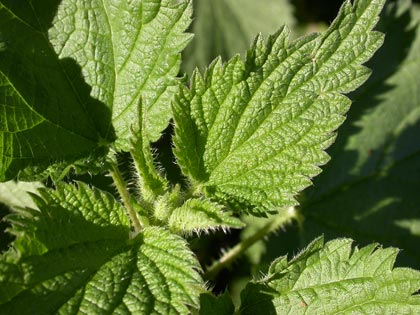
THE WILD NETTLE
The wild nettle is a herbaceous perennial, deciduous, high between 30 and 250 cm. It has an erect stem, densely hairy, striated and, on top, fluted square section slightly branched a diameter between 3 and 5 mm. The plant also spreads through vigorous creeping rhizome, cable and much branched, giving rise to new plants. The leaves are large, ovate and opposite, lance-shaped, jagged and sharp, dark green on the upper side, lighter and hairy on the underside. The blade is long up to twice the petiole. The female flowers are collected in long hanging ears, while the male flowers are gathered in erect ears. Both have four sepals that surround the four stamens (the male flower) or the ovary (the female flowers). By female flowers it develops an oval achene with a tuft of hairs at the apex, long up to 1.3 mm wide and up to 0.9 mm, which contains the seeds. Leaves and stems are covered with trichomes, stinging hairs containing the substance that the plant adopts defensive purposes. The tips of the hairs have a small ball that, when touched, lets out a fluid irritating to the skin of humans and animals. The coat is constituted by a single elongated cell with walls calcified, while the tip is silicified and reform easily. The irritation causes the formation of small rashes on the skin, and is associated with a feeling of itching and numbness that lasts from a few minutes to a few hours. The toxins present in the fluid are to be serotonin, histamine, acetylcholine, acetic acid, butyric acid, Leukotrienes and formic acid. The exact formulation has not been fully studied, because of the difficulties of extracting chemicals from the hair. The plants of the genus Urtica are used and cultivated by man since ancient times for the production of fibers, for their medicinal applications and for the preparation food.
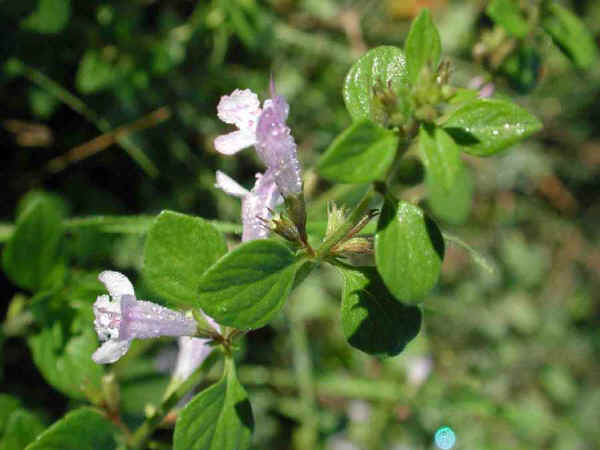
THE WILD MINT
The wild mint is an aromatic herb of the family Lamiaceae, used in cooking and herbal medicine. It has a faint smell of mint. In Tuscany, is used to flavor the mushrooms.

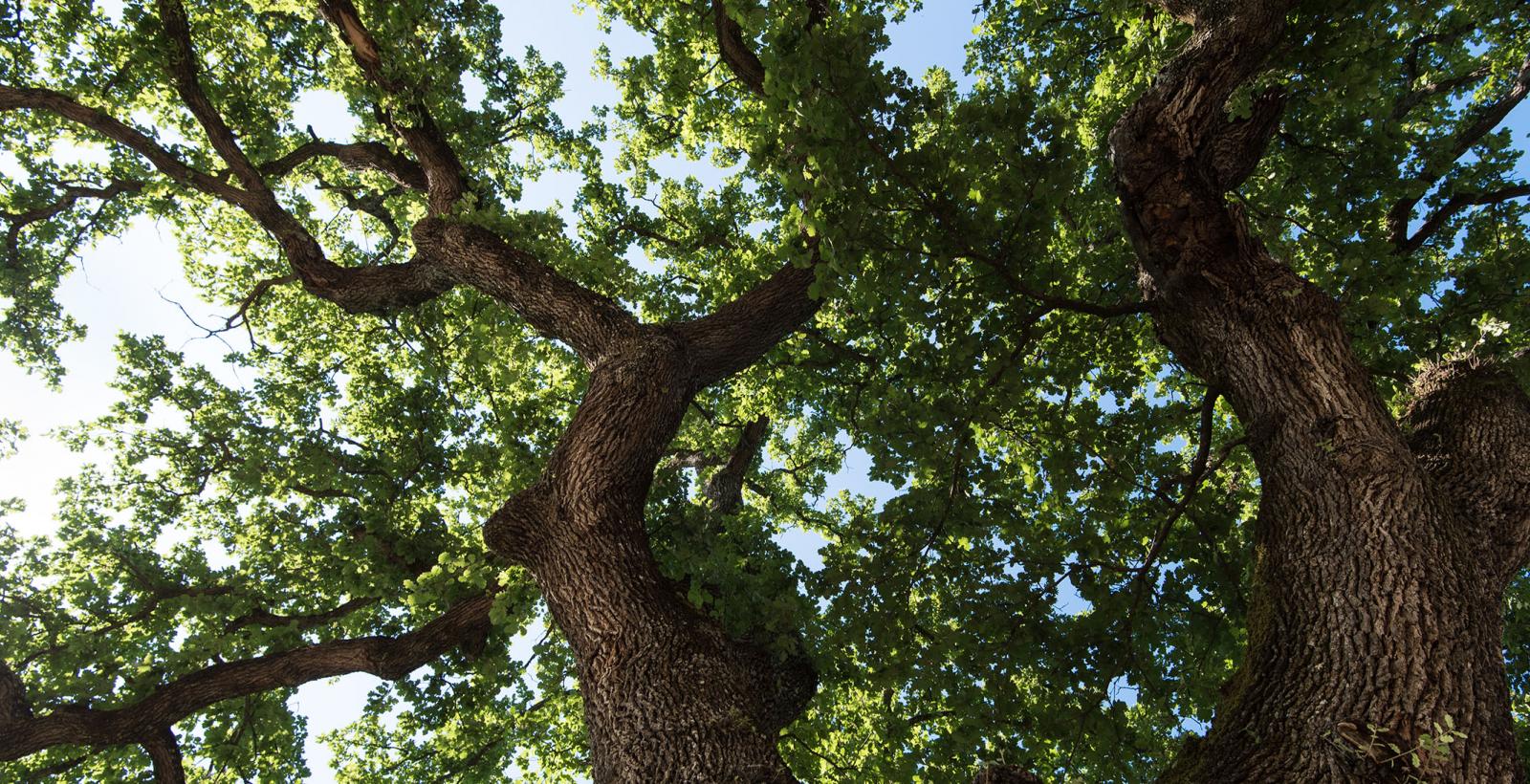



FIND US ON AND
AND 